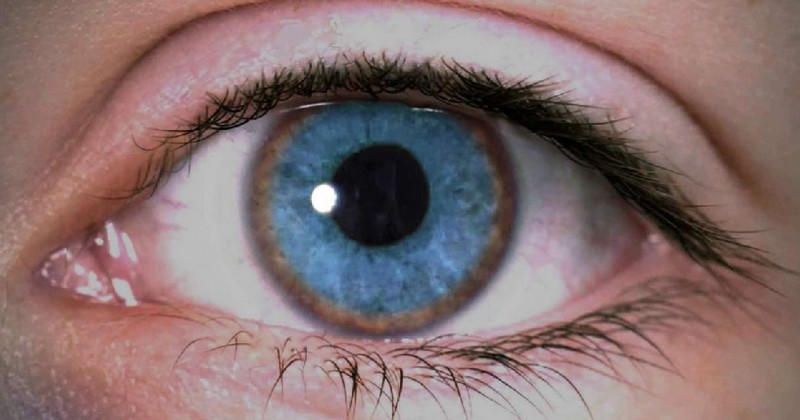Wilson’s disease: symptoms, causes and treatment.

A genetic disease related to poor copper metabolism in the body.
Copper is an essential trace element that we absorb from certain foods and that allows us to enjoy good health. However, it is toxic and harmful to health when the amount of copper in the body is excessive; this is what occurs in Wilson's disease.
This rare disease is inherited from parents in an autosomal recessive pattern. In this article we will know its risk factors, what are its symptoms and how it can be treated.
Copper and its impact on health
Copper is a substance (trace element) that we extract from some foods such as chocolate or cereals, and that contributes to maintaining good health. It is involved in the formation of hemoglobin, red Blood cells and various enzymes; it also participates in the degradation of carbohydrates, lipids and proteins.
It is also involved in the assimilation of vitamin C by the body.
Thus, copper plays a fundamental role in the development of healthy nerves, bones, collagen and melanin, the pigments of the skin. Normally, copper is absorbed from food and its excess is excreted by the body.and its excess is excreted through a substance produced in the liver (bile).
However, in people with Wilson's disease, however, copper is released directly into the bloodstream.. This can lead to significant damage to the brain, kidneys and eyes.
Wilson's disease: characteristics
Wilson's disease is a rare inherited disorderThe body cannot get rid of the extra copper and therefore accumulates copper in the liver, brain and other vital organs. To stay healthy, the body needs certain amounts of copper, but if its presence is too high this can be toxic.
This disease, in which copper metabolism is altered, exists from birth onwardsAlthough it is true that the symptoms do not begin to manifest themselves until later, usually between 5 and 35 years of age. That is why the diagnosis is often made at that time. It can also affect older or younger people.
Symptomatically, the disease begins to affect the liver, the central nervous system or both at the same time.
The diagnosis of Wilson's disease is made on the basis of physical examination and laboratory tests.It is not usually very complex.
Symptoms
As we have seen, although Wilson's disease is present from birth, the signs and symptoms do not become apparent until a certain amount of copper accumulates in the brain, liver or other vital organ. a certain amount of copper accumulates in the brain, liver, or other vital organ..
Signs and symptoms may vary depending on which parts of the body are affected by the disease.
The most characteristic symptom is the presence, around the cornea of the eye, of a brown ring. However, other symptoms are manifested such as:
- Fatigue, lack of appetite or abdominal pain.
- Yellowing of the skin and whites of the eyes (jaundice). (jaundice).
- Color changes in the eyes to golden brown (Kayser-Fleischer rings).
- Fluid accumulation in the legs or abdomen.
- Problems with speech, swallowing, or physical coordination.
- Uncontrolled movements or muscle stiffness.
Causes
The direct cause of Wilson's disease is inherited Wilson's disease. follows an autosomal recessive patternwhich means that in order to have it, one copy of the defective gene must be inherited from each parent. If the person receives only one abnormal gene, he or she will not have the disease, although he or she will be considered a carrier and it is likely that his or her sons or daughters will inherit the gene.
Risk Factors
The risk of Wilson's disease increases if the father, mother, or a sibling is a carrier or has the disease. That is why in these cases it is advisable to carry out a detailed genetic analysisto determine whether or not the disease is present.
As we will see, the earlier the disease is detected, the more likely it is that the treatment will be effective.
Treatment
Wilson's disease is a treatable disease; thus, if it is detected early and appropriate treatment is administered, people who suffer from it can enjoy good health and a good quality of life..
Such treatment will consist of a pharmacological treatmentThe treatment will consist of pharmacological treatment, specifically the administration of drugs that eliminate the extra or "excess" copper from the body.
In addition to taking these drugs, patients with this disease should follow a low-copper diet for life. Thus, they should avoid foods with high levels of copper, such as mollusks or liver.
On the other hand, when treatment is started, certain specific foods such as chocolate, hondos and nuts or dried fruits should also be avoided.
Patients should also have their household water tested (to monitor the amount of copper in it) and not take vitamins containing copper.
Bibliographic references:
- NIH: National Institute of Diabetes and Digestive and Kidney Diseases. (2019). Wilson's disease. MedlinePlus.
- Hernandez, M.D. and Lopez, S. (2011). Wilson's disease. Clinical Laboratory Journal, 4(2), 102 - 111.
(Updated at Apr 13 / 2024)